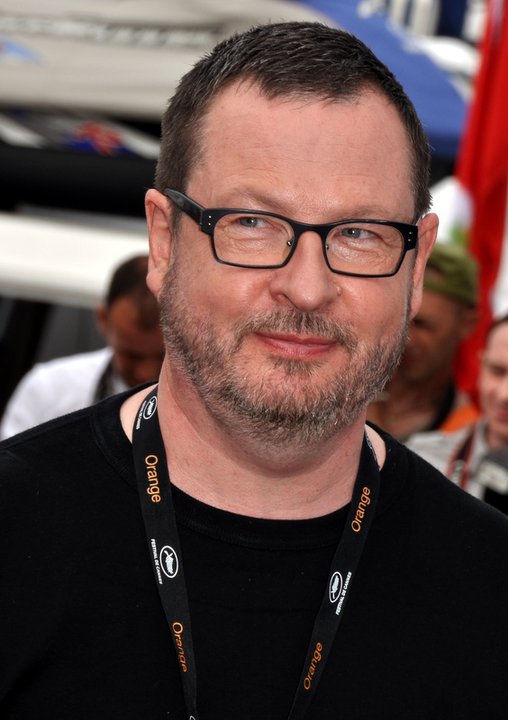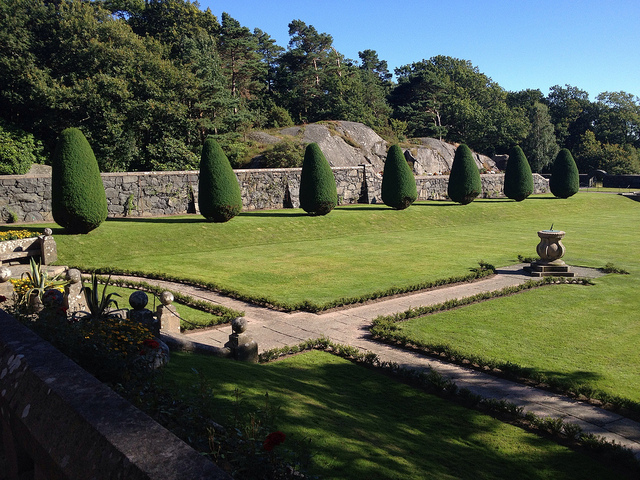Lars von Trier (b. 1956)
Danish director Lars von Trier is world-famous for his renewal of film media. Through his work on the ‘Golden hearts trilogy', the ‘Depression triology' and ‘Dogme 95’, he has challenged film genres and narrative conventions. His work with video and digital pre- and post-production and various transmedia forms always carries his signature as an auteur who wants to affect and provoke audiences to see and think in new ways.

The Danish film director Lars von Trier was born in Copenhagen in 1956 and studied at the Danish Film Academy. von Trier has become the most famous Danish director since Carl Theodor Dreyer, to whom he paid tribute in his ‘Golden Hearts Trilogy’ on female (com)passion: Breaking the Waves (1986), Idioterne (The Idiots, 1998) and Dancer in the Dark (2000). In von Trier’s versions, however, the heroines’ stories were not of a religious spiritual nature; they rather function as test cases for half ironic explorations of whether or not a modern audience would be able to believe in (fictions of) goodness.
Prior to this exposé of melodrama played out in a somewhat tragic (or ironic) register of passion, von Trier had made another trilogy, consisting of Forbrydelsens element (The Element of Crime, 1984), Epidemic (1987), and Europa (1991). These visually striking neo-noir films paid tribute to European film aesthetics from German expressionism to Andrei Tarkovsky (1932-1986). The reference to the visual style of Tarkovsky is manifest in many of von Trier’s films, and he made an explicit tribute to him at the ending of Antichrist (2009). Meanwhile, von Trier’s overall reference in style, composition and choice of subject throughout his whole oeuvre is first and foremost to Danish director Carl Th. Dreyer (1889-1968).
In between the above mentioned trilogies, he directed a television series, Riget I & II (The Kingdom I & II, 1994, 1997) that dealt with ghosts haunting the biggest hospital in Denmark, Rigshospitalet in Copenhagen, nicknamed ‘Riget’. In terms of genre, the series spanned from horror and ghost story to grotesque comedy. After each episode of this series on the frail foundations of knowledge, von Trier appeared in Carl Th. Dreyer’s suit addressing the TV viewer directly with diabolic, ironic comments on the continuation of the series, rather like Hitchcock in his “Alfred Hitchcock Presents” prologues to Ghost Stories for television in the 1960s.
Due to the budget of the TV-station, video equipment was used, and as lighting was confined in the real settings of the hospital, von Trier decided to underline the grainy ‘salt and pepper’ noise of the electronic TV-signal. As an extra element, he made editor Molly Malene Stensgaard embed shadow-like ghosts and demons during the editing phase. An exquisite use of hand-held camera and jump-cuts also contributed to the aesthetic composition that became an immediate success. These aspects subsequently became requirements in the ‘Dogme 95’ manifesto initiated by von Trier and Thomas Vinterberg. von Trier’s ‘Dogme’ film #2, Idioterne, depicted a kind of ‘spastic jesting’ at filmic conventions of narration and genre in forcing the film audience to pay attention to aesthetic evaluations and ways of decoding film. von Trier’s use of the ‘Dogme 95’ manifesto and the acceptability of improvised material from hand-held cameras if it was right for the mood or tonality, was key. The ‘spastic jesting’ of the ‘idiots’ thus included both the frequently unfocused and blurry filmic materiality as well as the audience who often reacted with dizziness and a feeling of seasickness.

Trier’s visually stunning Melancholia (2011) is set amongst the extravagant garden surroundings
of the Tjolöholm Castle in Sweden. Photo: Joakim Lind (CC BY-NC-SA 2.0).
Lars von Trier’s renewal of the aesthetics of film has been described as creation by restriction. In De fem benspænd (The Five Obstructions, 2003), he challenged the Danish film director Jørgen Leth to give up the minimalist style Leth had developed in the 1960s. In Dogville (2003) and Manderlay (2005), typically disparate media – film, theatre, literature and computer games – were brought together in a Brechtian scenario designed to explore whether cinematic space could still function without the indexical reference to reality that normally qualifies cinema, unlike the media of theatre, computer games and the novel.
In his ‘Depression trilogy’, Antichrist (2009), Melancholia (2011), and Nymphomaniac (2014), von Trier used older terms for his portrayal of various mental conditions in abnormal situations. The first film in the trilogy refers directly to Nietzsche’s book of the same name (1888), and von Trier played with his distinction between Dionysian and Apollonian forces throughout the triology. In Nymphomaniac a similar reference is made to Marcel Proust’s In Search of Lost Time (1922-31), applied to the style of narration. A remarkable use of high-speed camera in the introductions to Antichrist and Melancholia accompanied with snippets of classical music underlined the philosophical layer of reflection on mental illness. In The House That Jack Built (2018), a clear reference is made to another European classic, namely Alighiery Dante’s The Divine Comedy (1308-21), and the main character, Jack, who is a psychopath and serial killer, ends his life in Dante’s hell.
Further reading:
- Bodil Marie Stavning Thomsen: Lars von Trier’s Renewal of Film 1984-2014. Signal, Pixel, Diagram (Aarhus: Aarhus University Press, 2018).
- J. Lumholt, ed., Lars von Trier Interviews (Jackson, MS: University Press of Mississippi, 2003).
- P. Schepelern, Lars von Triers film: tvang og befrielse (2nd rev. ed.) (Copenhagen: Rosinante, 2000).
- Det Danske Filminstitut [The Danish Film Institute], ‘Lars von Trier’, www.dfi.dk/viden-om-film/filmdatabasen/person/lars-von-trier